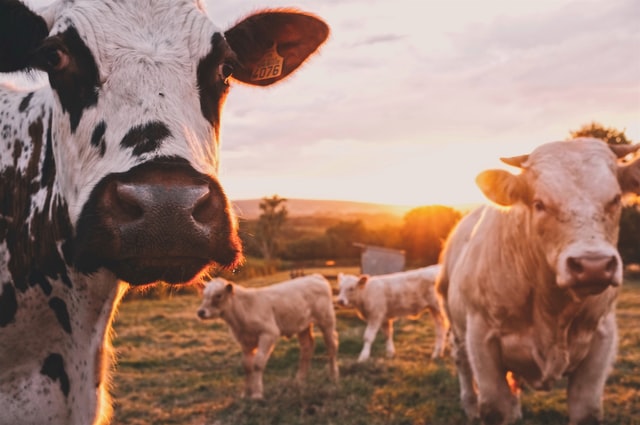Technologies Adapted by Sustainable Farms
Sustainable agricultural technology, better known as AgTech, has become a major focus for those in the agricultural industry as sustainability and ecological responsibility have made their way into the public eye. The result? New and innovative technologies are being adopted by sustainable farms as a means to reduce waste, grow food more efficiently, and produce healthier crops for both ourselves and the earth. But what are these technologies, and what do they accomplish?
Let’s take a closer look at some exciting technologies defining sustainable agriculture and how they’re being employed.
Vertical Farming
Conventional farming doesn’t offer the most efficient use of land, reduce our overall carbon footprint, or help us conserve water. However, where issues lie within existing systems, so too do solutions. One such solution that holds great promise for today’s world is vertical farming.
Aptly named, vertical farming eliminates the need to grow certain crops on land by using hydroponics and related techniques to create soilless crops, each stacked one on top of the other. This makes it possible to reduce the carbon footprint associated with transporting crops from the farm to the grocery store, utilize water more efficiently (using up to 85 percent less water), and even grow up to 18 cycles per year, providing farmers with a higher yield.
In some cases, vertical farming takes place within markets to ensure that there’s no need for the crops to travel at all. In other cases, farmers will keep their crops growing and will distribute these crops in their containers so that there’s no further carbon footprint associated with the act of having to prepare and distribute these crops once they’ve been harvested. Better yet, this keeps the crops farm fresh so that consumers get a better quality product for their money. No matter which approach farmers decide to take, vertical farming is an excellent way to conserve water and land space while also reducing carbon emissions.
Smart, Resourceful Irrigation Systems and Technologies
Water conservation is important for the environment, but the reality is that all living things need water. Irrigation is crucial to growing successful crops. However, technologies designed to help farmers use their water more efficiently are starting to gain traction.
One such irrigation technology being leveraged is artificial intelligence (AI). AI, digital sensors, and remote technology allow farmers to monitor their crops remotely, better understand what their crops need more of or less of to thrive, and help them learn more about best farming practices over time. While this has a wide range of benefits and paints a pretty broad picture of what tech can achieve, it also shows that farmers can manage irrigation systems, reducing water waste and ensuring their plants get enough water without oversaturating them or underwatering them in an attempt to conserve water.
Beyond that, there are more specific technologies that are getting creative with irrigation systems. One company, BioFiltro, has managed to find a way to drain the toxic chemicals out of manure and fertilizer to make the available water within the waste suitable for irrigation purposes. These types of creative innovations allow farmers to make use of waste and conserve water!
Alternative Feed Solutions
Beyond crops, livestock produces a major carbon footprint. But while many think about the carbon emissions of the animals themselves, the reality is that the issue of sustainability goes as deep as the feed that we produce for livestock. More importantly, one shouldn’t overlook the aquaculture feeds needed to maintain farm-raised fish.
While statistics will vary depending on who you ask and the study methods employed to reach those figures, the reality is that feed produced using sources of protein like soy and forage fish requires a great deal of energy, water, and space. In most cases, the protein sources can be quite wasteful. Fortunately, for every problem, there is a solution.
Some companies, like Protix Biosystems, are using insects like black soldier flies to solve this livestock feed problem. Unlike crops or fish, black soldier flies don’t require a lot of space, energy, or water to produce. Instead, these companies utilize food waste and larvae to create a sustainable source of protein for their customers. Better yet, it’s a versatile source of protein that can be used for livestock feed, aquaculture, and even for pets.
While traditional sources of protein like forage fish and soy have been used in the past, the truth is that there are other sources of protein out there that are much easier to produce and have less of an impact on the environment. However, innovation in this area of agriculture technology doesn’t stop there.
Enifer Bio aims to produce aquaculture feed by using renewable carbon sources to produce a single cell protein derived from fungi known as Pekilo mycoprotein. This protein is very easy to cultivate and contains up to 65 percent protein and 20 percent beta-glucan content. Other companies use yeasts and bacteria to produce similar results. Either way, the finished product ensures that precious resources aren’t going towards crops or other sources of proteins and nutrients that are more wasteful than the options listed here.
Whether it’s livestock or farm-raised fish, companies are finding ways to feed these animals without having to contribute to greater global damage along the way.
As Humans Find New Ways to Streamline Farming Practices, We Can Expect to See Further Innovations
When faced with issues like global warming, it’s amazing what humans can achieve when we work together. Whether it’s leveraging technology to grow crops more efficiently, using man-made structures to farm certain crops without the need for soil or extensive space, or even finding more sustainable sources of protein for livestock and farm-raised fish, AgTech is going above and beyond to solve the global climate issue.
If you love learning about new technologies targeting sustainability or even wish to apply some of these technologies yourself, the guide above will provide you with deeper insight into the sustainable AgTech products and systems being employed by responsible farmers today.
Author: Jordan McDowell is a writer and content strategist. He specializes in technically-oriented B2B and B2C content for a number of digital companies.




Sorry, the comment form is closed at this time.